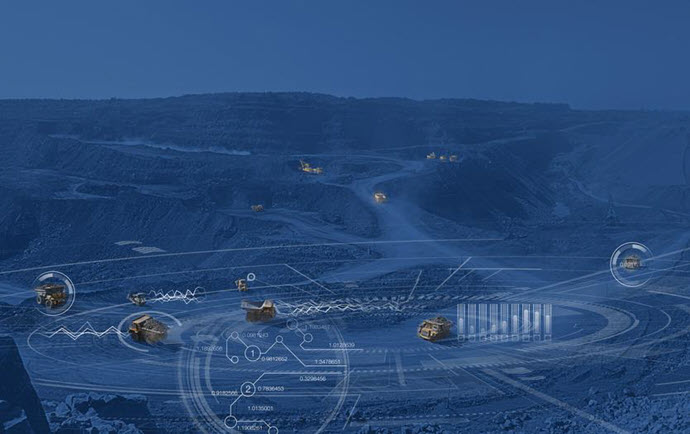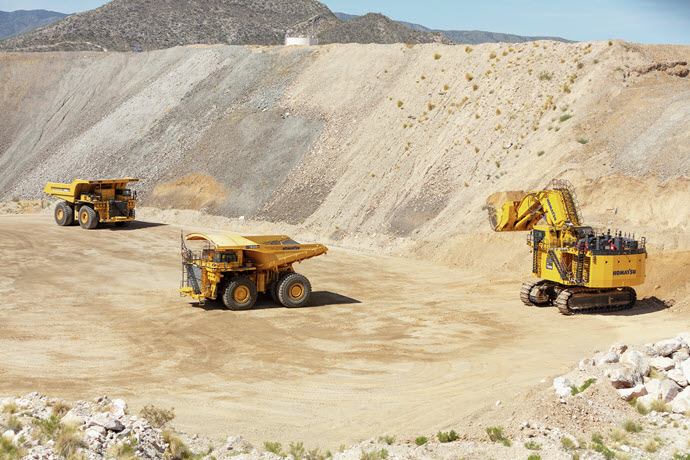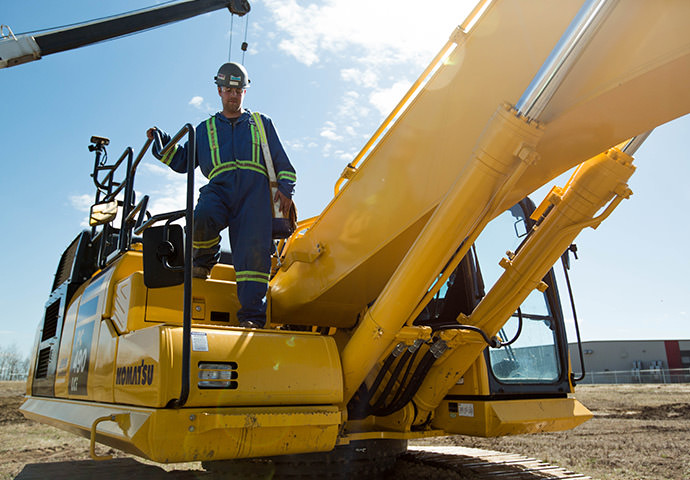Advanced features in mining equipment have been developing for at least two decades. The recent maturing of these technologies is transforming not only equipment but mining operations.
By Scott Schellenberg
Advanced features in mining equipment have been developing for at least two decades. The recent maturing of these technologies is transforming not only equipment but mining operations.
By Scott Schellenberg

As we’ve alluded to in past newsletters, advanced features on mining equipment have reached the stage where they’re transforming the equipment and how mines operate. The term “smart mining,” which gained wide use only a few years ago, is much more than a buzzword – it is a trend redefining operational practices, job descriptions, strategic plans, and making mines more efficient, safer, and greener.
These new capabilities are enabled by maturing several technologies that now work interactively. On the operations side, we’re seeing massive improvements in autonomous haulage, semi-autonomous operation of various machines, and tele-operations. We’ve also seen significant advances in collision avoidance systems and other technologies that alert operators or automatically intervene when there is a safety threat. And to pull it all together, advanced software is bridging the gap between the field and the strategic operation of the mine.
The innovative technology means that people can operate equipment in semi-autonomous mode from a back office or remote location, providing a range of productivity improvement options, including operator training and support, reducing operator travel time, or even leveraging the skills of a veteran operator in several locations simultaneously. Safety is another winner here – an operator of a semi-autonomous/tele-remote machine can work out of harm’s way. In contrast, the machine operates in a hazardous area such as next to a high wall or around a tailings pond.
At the same time, smart mining equipment accelerates the journey to sustainable mining. The big trend today is electrification – how do we convert equipment from a diesel-driven prime mover to an electrically driven one? Electrifying opportunities are an example of a direct impact on your carbon reduction. Today, customers are investing in trolley assist, where electrically powered haulage trucks get their power from overhead lines like the train lines we consumers see in major urban areas. As well we’re seeing an increasing selection of battery-powered machines.

But the piece that’s maybe not as obvious is that the newer equipment is collecting big data, giving mines multiple opportunities to improve their operations. There are many options. Suppose you’re looking at the productivity of a fleet of haul trucks, for example. In that case, we can monitor and measure the efficiency of the equipment throughout the entire haul cycle. Our technologies can break down that whole cycle into components and measure the equipment’s efficiency in each component. Our customers measure their utilization down to seconds, so this kind of visibility is becoming very strategic.
When you look at the whole cycle, you might discover, for example, that a shovel isn’t matched correctly to load a truck quickly enough, or that it’s taking too long to queue underneath the shovel. Sometimes, the data tells you you should use different machines to do the job. The real win here is that you can use the data to improve processes and make them more efficient or more effective.
When you make these improvements, you create efficiency in your haul cycle that equates to fuel savings, tire savings, and all that contributes to your GHG reduction. So, the benefits tend to be interrelated – when deployed correctly, the technology can help make a mining process faster, more efficient, safer, and more sustainable.
Smart mining technology promises to be a critical differentiator as Canadian mines strive to compete globally. Canadian mines have incredibly high safety standards, and we pay our people well, so the mines we compete with might have lower operating costs in those areas. This means our customers must leverage all their advantages to make their mines as efficient as possible.
One of the challenges is having a sufficient level of technological expertise to take full advantage of what’s available. To do this, you can’t just deploy it and expect improvements – there’s a significant change management component. In addition, you can’t just train a few engineers – everybody from operators to senior executives has to understand how the technology works, impacts skills requirements, and affects planning and development.
SMS Equipment saw this trend coming a few years ago, and we decided to invest in significant smart mining support. Today we have over seventy-five technology specialists on staff to support our customers, and we’re also doing a lot of internal training to upskill our support people.
The transition to smart mining is a complex undertaking involving technology, skills, change management, and business planning. Our role is to provide comprehensive support for all aspects of that and to help Komatsu and our other vendors stay current with Canada’s unique requirements.


